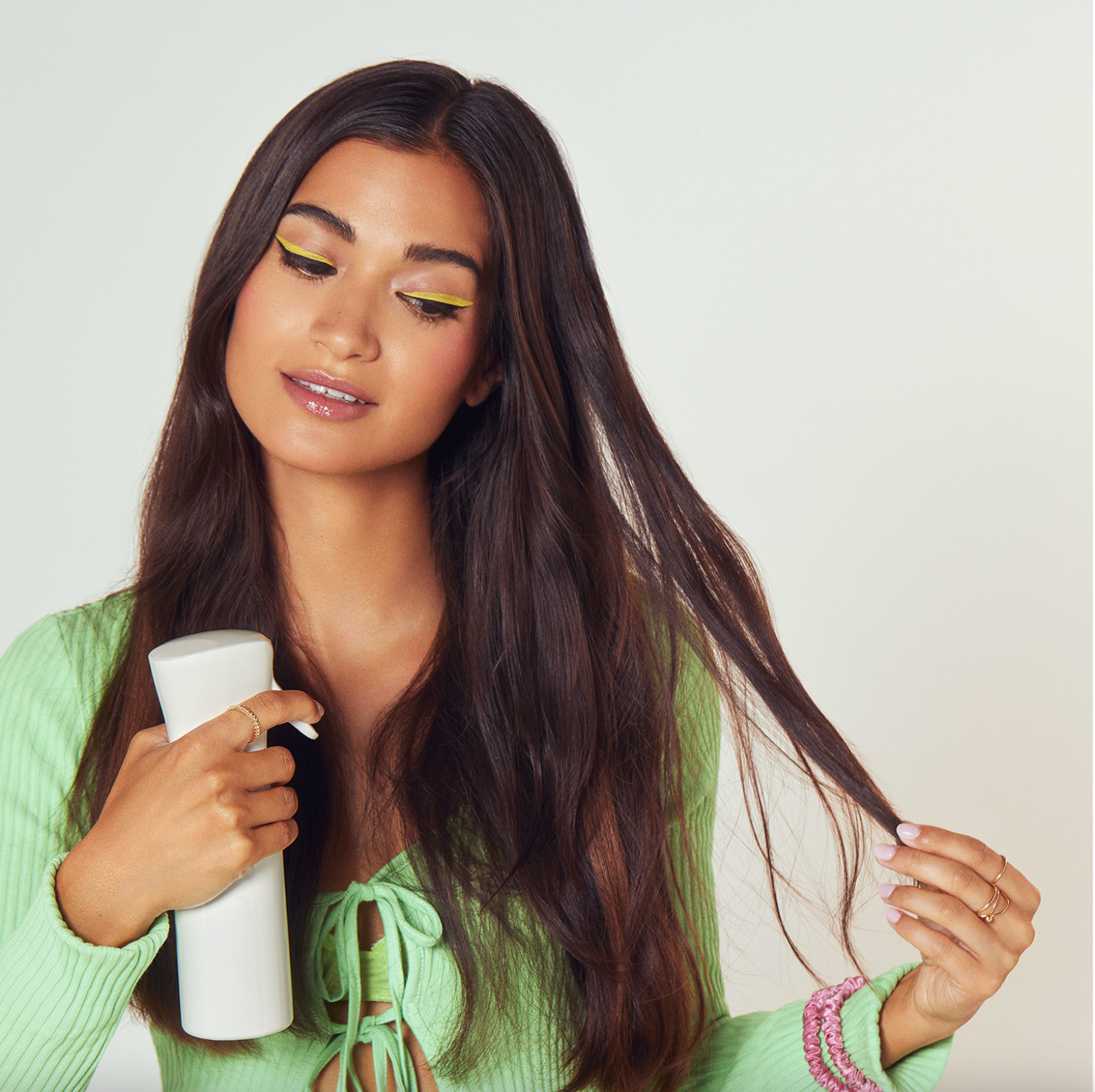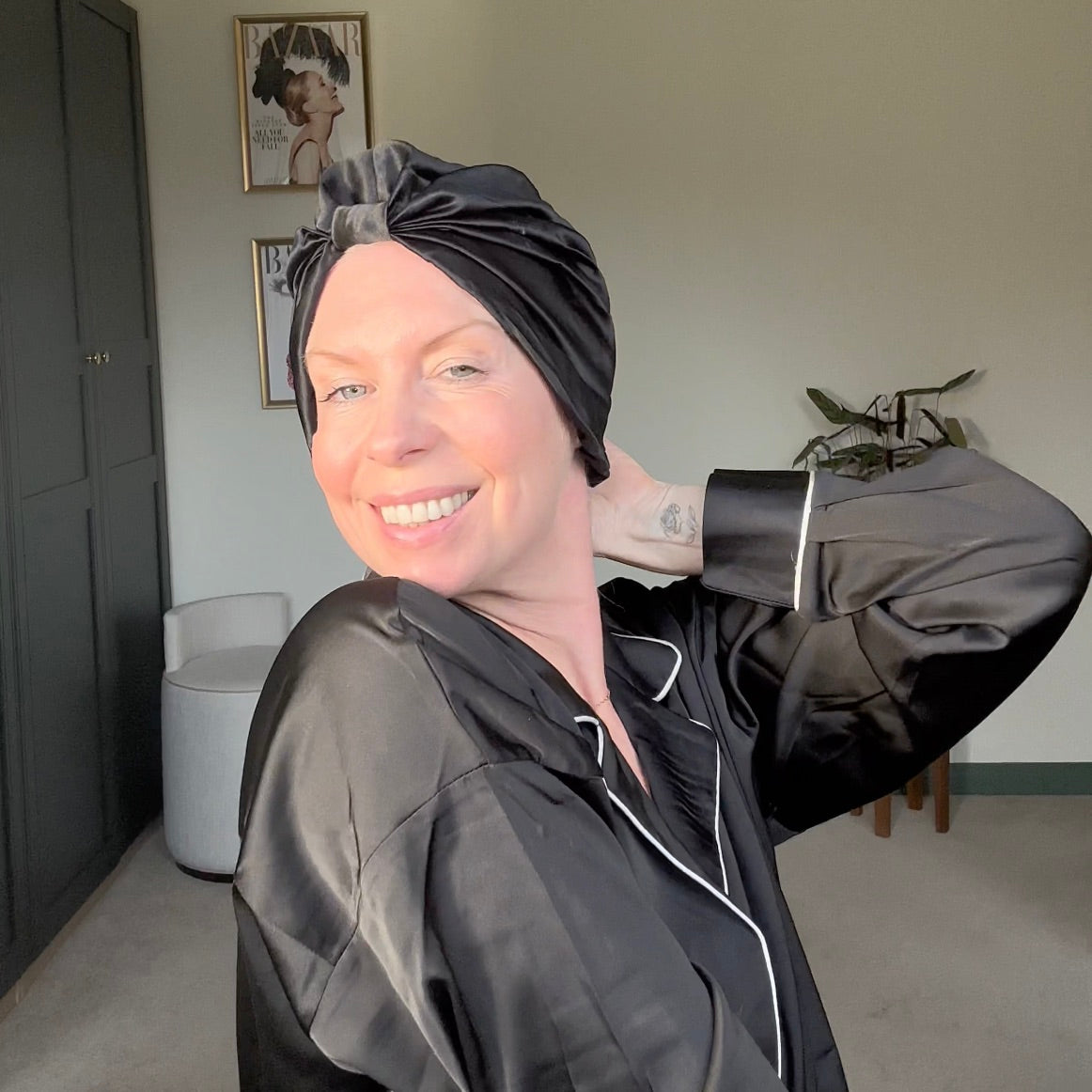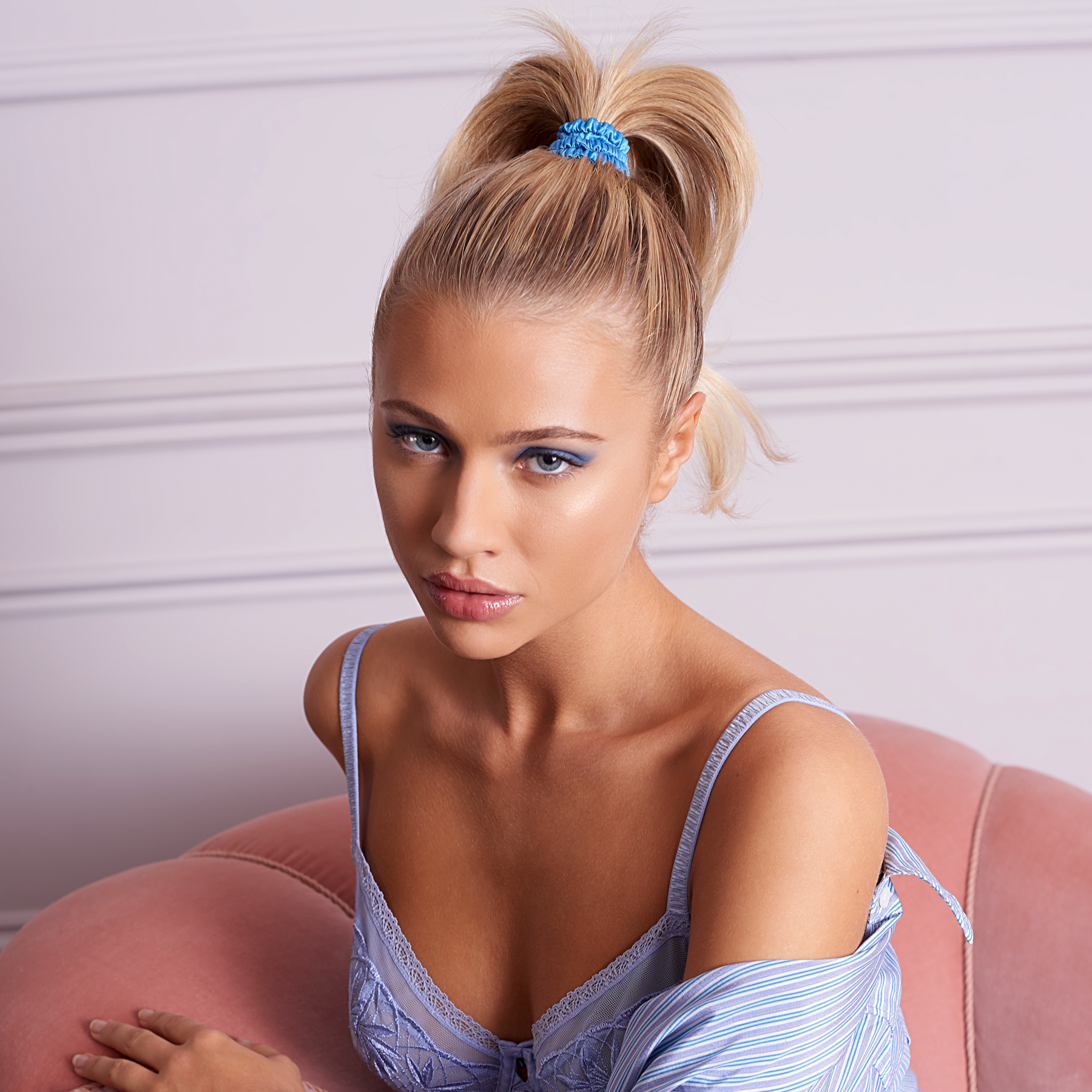
Help! How Can I Repair Heat Damaged Hair?
Fighting off damaged hair seems to be a constant battle filled with hacks, tips and product recommendations along the way to prevent damage from happening, keeping your healthy hair ‘safe’. But what about if your hair is already damaged? What can you do then?
This is more common than not. A study by Wakefield Research on behalf of Head and Shoulders found that over half of the women in the U.S. (57%) would consider their hair to be damaged, and a staggering 91% continue to do things that they know are damaging their hair further everyday. One of the leading causes of daily damage is heat.
How does heat damage my hair?
Our co-founder, Maria Sotiriou, who has over 37 years of experience in the hair industry, explains:
“Heat damages the hair by dehydrating and burning the cuticles found on each strand of hair.
The best example of cuticles would be the scales of a fish; when they lay flat and smooth, they protect the fish, and have an illuminating reflective shine.
The cuticles begin at the root, and end at the tip of the hair. When overuse of heat occurs the cuticles dehydrate, rise up, and are easily bucked and damaged. Moisture is then lost out of the inner structure of the strand, so the hair becomes considerably weaker.
Loss of moisture and a breakdown of keratin bonds results in lack of elasticity, snapping, and split mid lengths and ends. This is why running hot tools, such as hair straighteners, down dry dehydrated hair is detrimental to hair health.”
Just like our shiny fish example, when our cuticles are ‘happy’, laying nice and smooth all the way down the hair shaft, our hair will appear healthy, shiny and luminous. For most of us, that healthy hair look is the goal. It’s simple, to achieve that we must avoid damaging our cuticles.
However, by looking at the statistics that ‘91% of women in the U.S. continue to cause damage to their hair daily’ it’s clear that that is easier said than done.
If your hair is already damaged and your cuticles are already ruffled up, your hair is going to look dry, frizzy, full of flyaways and will behave somewhat unruly. And what do we all do when our hair isn’t behaving properly? Reach for heated tools. It’s a vicious cycle.

How can I reduce using heat on my hair?
One of the best ways to repair already damaged hair is by reducing the amount of heat we use.
Maria says, “If you use heat on your hair at any time to achieve your preferred style, then from my many years of experience I would say, “always think about the longevity of the style”.
Ask yourself, “how can I style my hair in the safest way to make it last for the longest length of time?”.
This will dramatically reduce the need to use heat on your hair.
With good styling advice, products, and wearing a SILKE London Hair Wrap nightly, utilising the Heatless Curler Kit, and switching to SILKE Hair Ties as part of your weekly routine, you can help to eliminate damage, improve hair health, and maintain any style. This is the key to long term hair health. Be intentional, respect one of the most valuable assets you have. After you wear your hair every day, it’s your most important accessory.”
An ideal weekly hair routine for repairing damage, or preserving your hair pre-damage, goes something like this:
WHEN IT COMES TO WASHING …
- Choose a natural oil of your choice for a deep scalp treatment pre-hair wash.
- Apply this to the scalp and leave for a few hours or even overnight. When applying, take the time to give your scalp a deep massage to stimulate blood flow.
- When you come to wash out the oil treatment choose your favourite shampoo and be sure to wash your hair twice. Think of this as the same as a double cleanse for your face, but for your scalp. Again, get in there with a good massage ensuring you don’t forget to really scrub behind the ears and down the nape of the neck, that’s the most commonly forgotten place, and also the place where the most dirt builds up!
- Continue your hair wash routine as normal.
BLOW DRYING YOUR HAIR…
- When it comes to blow-drying, you want to be intentional about it. If you don’t put the time and effort into that first blow-dry and style post-hair wash, you’ll be fighting your hair for the rest of the week. If you struggle to make your routine completely heat less, here’s where you can utilise some heat to keep usage minimal in the long run.
- Maria recommends opting for a good boar bristle brush to be kind to your hair whilst it’s wet and at its most vulnerable. She also has a hard rule, ‘no tying your hair up when wet - ever!’.
- Depending on your hair type, here’s where you decide how much moisture to leave in your hair. Maria recommends aiming for 90-95% dry if your hair is damaged and porous, and 85% dry for normal hair types.
- Once you’ve finished up your blow-dry, pop in the SILKE Heatless Curler Kit and leave for a few hours or overnight, depending on the desired effect. Maria recommends a spritz of your favourite finishing spray at this stage to give your hair some extra hold.
- Take your Heatless Curler out, maybe apply a little more styling product of your choice, and you’re good to go. Here’s where the maintenance and magic begins!
BEFORE BED…
- Each night flip your hair upside down and gently twist your hair into a loose bun on the top of your head securing loosely with a SILKE Hair Tie, before popping the SILKE Hair Wrap on top. This is going to protect your hair, preserve your styling and give you a boost of volume come morning.
- You can also opt to reuse the Heatless Curler if your hair is heavy and you feel your curls need a ‘top up’.
- Wearing your Hair Wrap each night will keep greasy roots at bay by ensuring that the natural oils produced by the scalp are evenly distributed from root to tip. This ensures your blow-dry can go the distance, and also allows your dryer ends to benefit from an extra boost of hydration - great news for any recovering damaged hair!

THROUGHOUT THE WEEK…
- Maria likes to wash her hair once or twice a week maximum, so looking after her lengths and preserving her style each night is integral to making your hair last past day 4, 5 and 6.
- As you get into days 5, 6 and 7, you may want to opt for an up-do. In that case, swap your normal hair ties with 100% silk hair ties to ensure that those cuticles aren’t suffering unnecessary damage as you slide the ties in and out of the hair.
- There you have it - you’re back to step one!
SWITCHING TO HEATLESS STYLING
Most of us have seen various versions of heatless tools all over TikTok at this point; from the beautiful 100% silk Heatless Curler Kit, to unconventional methods like socks, dressing gown belts etc etc. If you’re interested in heatless tools, or have just started your heatless hair routine journey, Maria has some top tips. She says:
“Heatless styling tools work incredibly well and are key to repairing your hair from previous damage. Take our SILKE Heatless Curler made from 100% mulberry silk, it doesn’t absorb any moisture out of the strands of your hair like unconventional methods and tools.
Our Kit provides the perfect environment for the hair to dry and produce beautiful curls, but most importantly, because they’re made from 100% silk and not abrasive fabrics, the moisture within the hair strand is left in place so your hair can benefit, unlike dehydrating synthetic satin and cotton that literally sucks the moisture straight out of the hair strand making dry and damaged hair, more dry and damaged. This enables the cuticles to become supple and remain flat, locking in moisture protecting the inner bonds, and providing an optimal reflective shine (just like that shiny fish!).
To maintain the curls, simply rewind the curls onto the curler. Alternatively tie a loose high ponytail and put on a SILKE Hair Wrap before sleeping, or even use during the day.”
“Deciding how much moisture to leave in your hair before winding your hair into a Heatless Curler depends on different factors. If your hair is porous, bleached, coloured, and dry, you probably will need your hair to be around 90- 95% dry. On average the hair needs to be about 85% dry. There are so many benefits to using a heatless curler, knowing you are never going to damage or compromise the health of your hair is a great feeling, especially if you feel you’ve been fighting against your damage! 
There are many different methods of winding hair that can create different effects. The general rule is - thinner the sections, the tighter the curls. Thicker sections will give a softer relaxed curl, whilst hair with a natural wave or curl will have a more defined form.
I always recommend securing the curler in place with the SILKE clip at the top of the head. Take the first front section and wind up and round the curler, pick up the next section and add it to the section you already have in your hand, picking up the next section as you move down the curler. The ‘unicorn’ heatless curls method, which went viral, can be achieved by placing the Heatless Curler from the front middle parting down the middle nape of the head. Then winding alternative sections from right to left, all the way down.
Whichever method you choose, you will have shiny frizz free luxurious curls, using minimal heat, causing your hair no damage!”
Are you ready to embark on your heatless hair journey to save your hair from heat damage?
Love, SILKE xo









Leave a comment
This site is protected by hCaptcha and the hCaptcha Privacy Policy and Terms of Service apply.